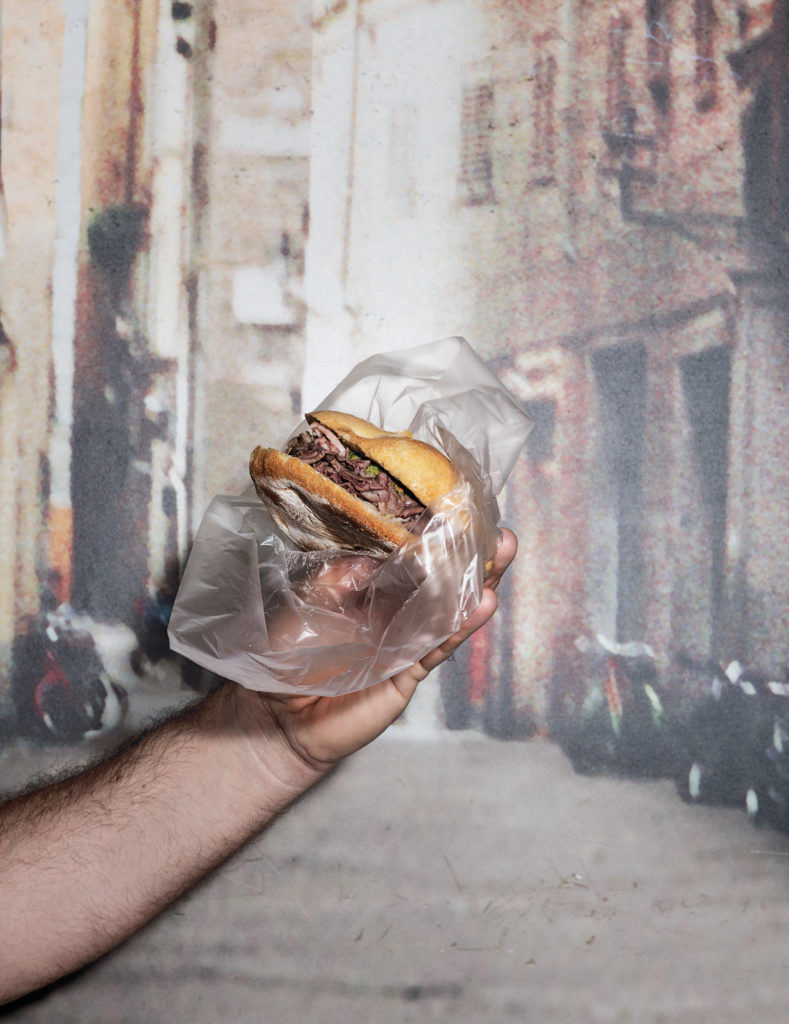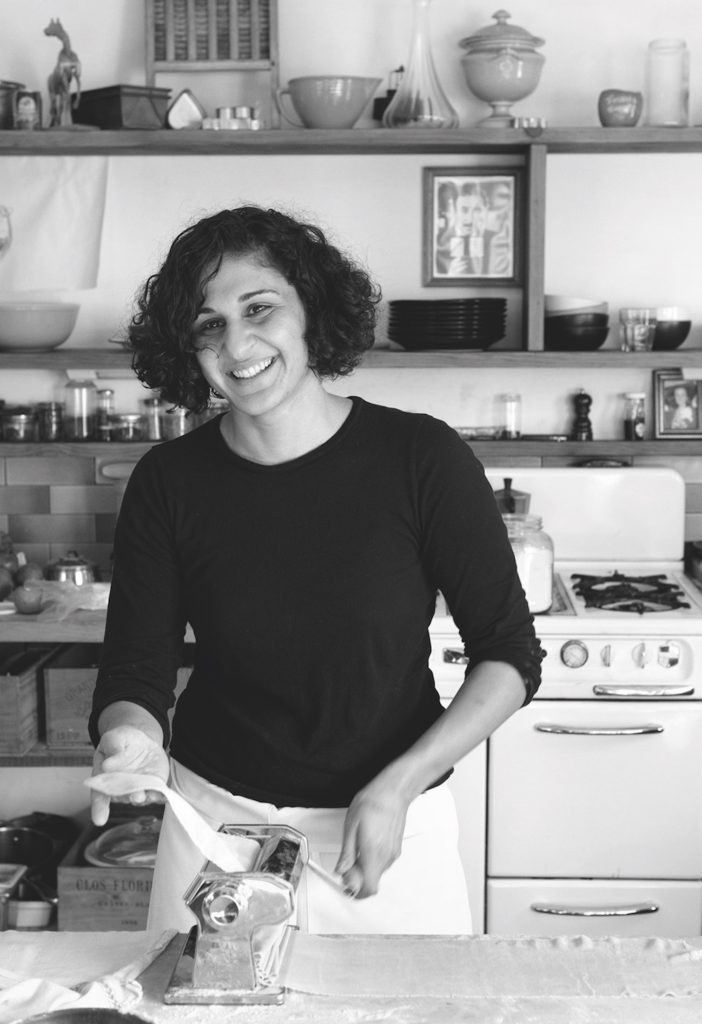Chef and food writer Samin Nosrat reflects on the panino bollito, a masterpiece of understated Italian fast food

I started at Berkeley’s Chez Panisse, in my home state of California, in 2000 with one adult travel experience under my belt: a year abroad in Europe, where the choices I made were informed by the cost of train tickets or the availability of creaky hostel beds. Food never entered the equation.
But from my first moments in the restaurant, when I sat through a menu meeting where the chef shared the origin story of each dish on that day’s menu, I saw how travel begets memory, which in turn begets great cooking. Each day – and each new menu – brought new stories of the far-flung restaurants, roadside stands and dear aunties and grandmothers whose food had inspired our cooking.
Many of the memories the chefs shared were of extravagant meals, but the ones that struck me most involved revelations about the simplest foods: a pot of beans cooked in coals, pasta made with dandelion greens, polenta fortified with cheese and thick cream. I knew that the next time I travelled, it would be in pursuit of those powerful, simple flavours.
So three years later, when I secured an apprenticeship in the kitchen of a tiny trattoria in Florence, I immediately started dreaming of all of the storied dishes I’d hunt for on my days off. I’d eat porchetta, thinly sliced roast pork seasoned with sage and garlic, and ribollita, the Tuscan bean, bread and kale soup that’s so thick it’s served on a plate.
One dish in particular, however, incited such universal obsession among the cooks at Chez Panisse that it had taken on an almost mythical quality: the panino bollito from a stall called Nerbone in Florence’s central market. While parts of it sounded great – the drizzle of salsa verde, the price: two euros – parts of it sounded terrible; it was, after all, essentially just boiled meat on a bun. What, I wondered, was mythical about that?
“The counter guy will dip the bun into the beef broth if you ask nicely,” the chefs told me. “It’ll put the best hamburger you’ve ever had to shame,” they said. I was doubtful, but I left it on my list.
A week after I arrived in Florence, I made my way to Nerbone. While I waited in the long line, I rehearsed the Italian under my breath until it was my turn to order. “Un panino bollito con tutte due le salse. Bagnato, per favore.”

I’d studied Italian intensively before arriving but when the man at the counter replied in Tuscan dialect, I froze. Stubbornly refusing to admit that I had no idea what he’d said, I blushed, nodded and paid the cashier. He handed me my sandwich, which I took to eat on the steps of the market. I took a bite.
How could this strange-textured, off-tasting thing be the dish that inspired so many sighs at Chez Panisse? I forced myself to continue to chew, and then to swallow. There was no way this was the brisket I’d heard about. I went back and hovered near the sandwich stand, studying the signs, until I finally figured out what the man at the counter had been trying to tell me: He’d sold out of brisket. All he had left was lampredotto, a Florentine specialty. With my vehement nodding, I’d signalled that instead of brisket, I’d be fine with tripe.
Though embarrassed by my mistake, I couldn’t give up. I returned to Nerbone the following week. I arrived early to beat the lunch rush, ordered my sandwich and, just as before, I took it to the steps. I took a bite and swooned. Suddenly, I understood. The tender meat melted in my mouth. The bun had absorbed twice its weight in savoury broth, which amplified the flavour of the meat. Any other sandwich composed simply of bread and meat might have threatened tedium of taste.
But this one was enhanced by the kick of chilli oil and the punch of an acidic salsa verde. Not only was the panino better than any burger I’d ever tasted, it was the best sandwich, of any kind, I’d ever eaten.
I grew obsessed, eventually moving to an apartment almost solely for its proximity to Nerbone. I ate there so often that I got to know the cooks. I convinced them to let me into the kitchen so I could learn their secrets. They showed me how to season the meat generously with salt. They taught me that the pot of meat must never boil, but rather remain at a simmer for hours. And they demonstrated exactly how they make their textbook-perfect salsa verde: not by painstakingly chopping parsley and celery and gently blending it with olive oil and vinegar, but by throwing everything into a food processor and pressing the ‘on’ switch.
Two years later, I returned to Berkeley and started cooking at an Italian restaurant. I put a bollito sandwich with chilli oil and salsa verde on the menu, and waxed poetic about Nerbone to the staff. A few years later, one of our young cooks moved to Florence to study and cook. As I printed out a list of my favourite spots in Tuscany the night before he left, I gave him a few tips: “Watch how the Italians use olive oil. Eat everything you can. Don’t be afraid to admit when you don’t understand Italian.” And finally, I warned, “Watch out for the lampredotto at Nerbone.”
Photography Mattia Micheli
This is an extract from issue 21 of Port, out now. To buy or subscribe, click here.